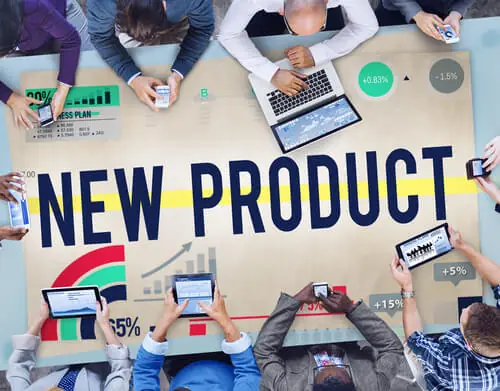So you have a product that’s the next big thing to hit the market – great! Now you need to see it in action and begin gathering data to test your belief. Like with any mind-blowing invention, market-testing and customer-feedback will determine whether or not your idea will succeed in today’s business.

Many of us are familiar with the term “minimum viable product” (or MVP). Coined by Eric Ries, author of The Lean Startup, an MVP is a minimum or core product that is deployed in the marketplace and invites feedback from consumers. It’s not a perfect or complete product – rather, an MVP is completed in a short amount of time in order to gain information that can be used to pivot, scale or suspend the final product. Essentially, an MVP is a hypothesis-driven product that tests an idea in order to validate a concept.
Let’s back up for a second though. What if you’re not testing a hypothesis but want to see if you can deliver a product that creates an amazing user experience that customers will love? That’s where the “Minimum Desirable Product” (sometimes referred to as “Minimum Delightful Product”) comes into play. An MDP focuses on the customer perspective and is the “simplest experience necessary to prove out a high-value, satisfying product experience for users.” It focuses on whether or not you’re creating a product that fulfills a need and provides a valuable experience for future customers. The MDP can be thought of as the simplest product that has the potential to excel in the marketplace and delivers an experience that customers love.

Viable vs. Desirable – What’s the Difference?
To understand these two terms thoroughly, we should begin with the definition of both terms.
- “Viable” – capable of working, functioning, or developing adequately; having a reasonable chance of succeeding
- “Desirable” – having pleasing qualities or properties; worth seeking or doing as advantageous, beneficial, or wise
In other words, something that is viable has the potential to succeed whereas something that is desirable satisfies a customer’s needs and is seen as beneficial. Desirability places an emphasis on the user experience and helps businesses figure out the benefits that they are providing to the end user. Viability is focused on business and whether or not your company’s product can generate revenue and succeed in the marketplace.
“Viable” also implies that below a certain threshold, a product is no longer marketable or profitable. It reduces the chances that you’re building a product that customers don’t want, addressing a huge problem many businesses face. An MVP eliminates spending too much time on developing a product with fancy bells and whistles that customers don’t even like. It’s an iterative process that lets entrepreneurs build-measure-learn and repeat, reducing the risk of failure and building upon the lessons learned from the previous MVP. It’s a cost-effective process that allows businesses to “build what they need”; determining what’s considered “viable or not” is a little trickier but comes with thorough research and customer feedback.
“Desirable” implies creating a product that users want and believe are beneficial to their lives. It’s all in the name: “desirable”. Something that is desirable is something that people want and fall in love with. It’s a product that customers seek out and it satisfies that hole in a consumer’s life. The MDP, in theory, is adopted much more quickly than an MVP and creates a higher level of satisfaction as a result of happy customers referring said product to their acquaintances. A desirable product is built out of a deep understanding of consumer needs and by interacting directly with a customer to determine what contributes to a delightful user experience.
Not sure what the difference is? There’s plenty of overlap between the two terms but here are some examples to distinguish between an MVP and an MDP:
- A gaming website with hundreds of paying subscribers but they only play once a month = MVP
- A product that your friends and family love and use everyday but retail stores won’t sell = MDP
- An online forum that lets users talk about cats, is ad-free, and users sign up for free = MDP
- A social platform that brings in profit but users rarely use the site = MVP
Which Comes First: Desirability or Viability?
Entrepreneurs want a product that will succeed in the marketplace. Consumers want a product that they’ll love and use in their everyday lives. So which should your business focus on? Pushing for an MDP may satisfy customers but it might not meet your revenue expectations. On the flip side, creating an MVP can save you money in the long term and provide immediate feedback, but if your consumers don’t even like your product you may be wasting your time.
Consider this: begin with the MVP in order to receive immediate feedback from potential consumers. Once you and your business are satisfied with the results you’ve gotten and can make the appropriate adjustments, create an MDP to push out to your target market. A Minimum Viable Product can provide valuable customer information that can lead to the creation of a Minimum Desirable Product that consumers fall in love with. Rather than separating the two ideologies, combining the MVP with the MDP is one way to propel your business forward as you develop a final product.




